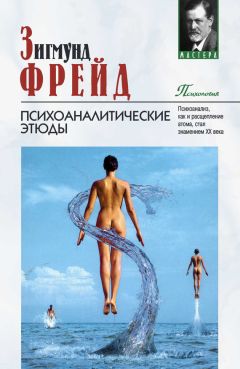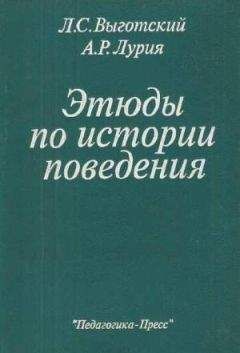Роберт Тайсон - ПСИХОАНАЛИТИЧЕСКИЕ ТЕОРИИ РАЗВИТИЯ
Brody, S. (1980). Transitional objects: Idealization of a phenomenon. Psychoanal. Q., 49:561-605.
Brody, S. (1981). The concepts of attachment and bonding. Amer. Psychoanal. Assn., 29:815-829.
Brody, S. (1982). Psychoanalytic theories of infant development and its disturbances: A critical evaluation. Psychoanal. Q., 51:526-597.
Brody, S., and Axelrad, S. ( 1970). Anxiety and ego formation in infancy. New York: Int. Univ. Press.
Brody, S., and Axelrad, S. (1978). Mothers, fathers, and children: Explorations in the formation of character in the first seven years. New York: Int. Univ. Press.
Broussard, E. (1984). The Pittsburgh firstborns at age nineteen years. In Frontiers of infant psychiatry. Vol. 2, ed. J. Call, E. Galenson, and R. L. Tyson. New York: Basic Books, 1984, pp. 522-530.
Bruner, J. S. (1974). From communication to language: A psychological perspective. Cognition, 3:255-287.
Bruner, J. S. (1977). Early social interaction and language acquisition. In Studies in mother-infant interaction, ed. H. R. Schaffer. London: Academic Press, pp. 271-289.
Brunswick, R. M. (1940). The preoedipal phase of libido development. In The psychoanalytic reader, ed. R. Fliess. New York: Int. Univ. Press, pp. 261-283.
Burgner, M. (1985). Oedipal experience: Effects on development of an absent father. Int.]. Psychoanal., 66:311-320.
Burgner, M., and Edgcumbe, R. (1972). Some problems in the conceptualization of early object relationships: Part II, The concept of object constancy. Psychoanal. Study Child, 27:315-333.
Burgner, M., and Kennedy, H. (1980). Different types of sadomasochistic behavior in children. Dialogue, 4:49-58.
Burlingham, D. (1952). Twins: A study of three pairs of identical twins. London: Imago.
Burlingham, D. (1973). The preoedipal infant-father relationship. Psychoanal. Study Child, 28:23-47.
Burlingham, D. and Freud, A. (1944). Infants without families. In The writings of Anna Freud. Vol. 3. New York: Int. Univ. Press, 1973, pp. 543-666.
Burns, P.; Sander, L.; Stechler, G.; and Julia, H. (1972). Distress in feeding: Short-term effects of caretaker environment of the first ten days. J. Amer. Acad. Child Psychiat., 11:427-439.
Busch, F. (1974). Dimensions of the first transitional object. Psychoanal. StudyChild, 29:215-229.
Buxbaum, E. (1945). Transference and group formation in children and adolescents. Psychoanal. Study Child, 1:351-366.
Buxbaum, E. (1980). Between the Oedipus complex and adolescence: The «quiet» time. In The course of life. Vol. 2, cd. S. 1. Greenspan and G. H. Pollock. Publication No. (ADM) 80-999. Washington, D.C.: DHHS, pp. 121-136.
Calef, V., and Weinshel, E. (1979). The new psychoanalysis and psychoanalytic revisionism. Psychoanal. 148:470-491.
Call, J. D. (1964), New born approach behaviorand early ego evelopment. J. Psychoanal., 45:286-294.
Call, J. D. (1979). Introduction to normal development. In Basic handbook of child psychiatry. Vol. I, ed. J. Noshpitzetal. New York: Basic Books, pp. 3-10.
Call, J. D. (1980). Some prelinguistic aspects of language development. J. Amer. Psychoanal. Assn., 28:259-289.
Call, J. D. (1983). Toward a nosology of psychiatric disorders in infancy. In Frontiers of infant psychiatry. New York: Basic Books, pp. 117-128.
Call, J. D. (1984). From early patterns of communication to the grammar of experience and syntax in infancy. In Frontiers of infant psychiatry. Vol. 2, cd. J. D. Call, E. Galenson, and R. L. Tyson. New York: Basic Books, pp. 15-29.
Call, J. D., and Marschak, M. (1966). Styles and games in infancy. In Infant psychiatry, ed. E. Rexford, L. Sander, and T. Shapiro. New Haven: Yale Univ. Press, 1965, pp. 104-113.
Campos, J.J.; Barrett, K. C.; Lamb, M. E.; Goldsmith, H. H.; and Stenberg, C. (1983). Socioemotional development. In Handbook of child psychology. Vol. 2, ed. M. Haith and J.J. Campos. New York: Wiley, pp. 783-916.
Cath, S. H.; Gurwitt, A. R.; and Ross, J. M., eds. (1982). Father and child: Developmental and clinical perspectives. Boston: Little, Brown.
Chasseguet-Smirgel, J. (1970). Female sexuality: New psychoanalyhc views. Ann Arbor: Univ. of Michigan Press.
Chess, S., and Thomas, T. (1986). Temperament in clinical practice. New York: Guilfoid Press.
Chodorow, N. (1978). Reproduction of mothering: Psychoanalym and the sociology of gender. Berkeley: Univ, of California Press.
Glower, V. L. (1976). Theoretical implications in current views of masturbation in latency girls. Amer. Pchnanal. Asm., 24:109-126.
Colarusso, C. A., and Nemiroff, R. A. (1981). Adult development: A new dimension of psychodynamic theory and practice. New York: Plenum Press.
Compton, A. (1980). A study of the psychoanalytic theory of anxiety: Part III, A preliminary formulation of the anxiety response. J. Amer. Psychoanal. Assn., 28:739-774.
Compton, A. (1981 a). On the psychoanalytic theory ofinstinctual drives: Part 111, The complications of libido and narcissism. Psychoanal. 13., 50:345-362.
Compton, A. (1981b). On the psychoanalytic theory ofinstinctual drives: Part IV, Instinclual drives and the ego — id — superego model. Psychoanal. 17, 50:363-392.
Darwin, C. R. (1872). The expression of the emotions in man and animals. Chicago: Univ, of Chicago Press, 1965.
Decarie, T. G. (1965). intelligence and affectivity in early childhood. New York: Int. Univ. Press.
Deese, J. (1973). Cognitive structure and affect in language in communication and affect. In Language and thought, ed. P. Piner, L, Kramcs, and T. Alloway. New York: Academic Press, pp. 91-113.
Demos, E. V. (1982). Facial expressions of infants and toddlers: A descriptive analysis. In Emotion and early interaction, ed. T. Field and E. Fogel. Hilisdale, N.J.: Eribaum, pp. 118-129.
Dcutsch, H. (1930). The significance of masochism in the mental life of women. In The psycho-analytic reader, ed. R. Fliess. New York: Int. Univ. Press, 1948, pp. 223-236.
Deutsch, H. (1932). On female homosexuality. In The psychoanalytic reader, ed. R. Fliess. New York: Int. Univ. Press, 1948, pp. 237-260.
Deutsch, H. (1944). The psychology of women: Apsychoanalytic interpretation. Vol. 1. New York: Grune and Stratton.
Deutsch, H, (1945). The psychology of women: A psychoanalytic interpretation. Vol. 2, Motherhood. New York: Grune and Stratton.
Dewald, P. A. (1981). Adult phases of the life cycle. In The course of life: Psychoanalytic contributions toward understanding personality development. Vol. 3, ed. S. 1. Greenspan and G. H. Pollock. Publication No. (ADM) 81-1000. Washington, D.C.: DHHS, pp. 35-53.
Dowling, S. (1977). Seven infants with esophageal atresia: A developmental study. Psychoanal. Study Child, 32:215-256.
Drucker, J. (1981). Cognitive and affective growth: Developmental interaction. In Development: Concepts of cognition and affect, ed. T. Shapiro and E. Weber. Hilisdale, N. J.: Eribaum, pp. 240-261.
Edelson, M. (1975). Language and interpretation in psychoanalysis. New Haven: Yale Univ. Press.
Edgcumbe, R. M. (1984). The development of symbolization. Bull. Hampstead Clin., 7:105-126.
Edgcumbe, R. M., and Burgner, M. (1975). The — phallic narcissistic phase: A differentiation between preoedipal and oedipal aspects of phallic development. Psychoanal. Study Child, 30:161-180.
Edgcumbe, R. M.; Lundberg, S.; Markowitz, R.; and Salo, F. (1976). Some comments on the concept of the negative oedipal phase in girls. Psychoanal. Study Child, 31:35-62.
Eisnitz, A.J. (1980). The organization of the self — representation and its influence on pathology. Psychoanal. 49:361-392.
Ekman, P. (1984). Expression and the nature of emotion. In Approaches to emotion, ed. K. Schcrer and P. Ekman. Hilisdale, N. J.: Eribaum, pp. 35-55.
Ekman, P., and Friesen, W. V. (1975). UntMiking the face. Englewood Cliffs, N. J.: Prentice-Hall.
Ernde, R. N. (1980a). Emotional availability: A reciprocal reward system for infants and parents with implications for prevention of psychosocial disorders, in Parent — infant relationships, ed. P. M.Taylor. Orlando, Fla.: Game and Stratton, pp. 87-115.
Ernde, R. N. (1980b). Toward a psychoanalytic theory of affect: Part I, The organizational model and its propositions. In The course of life: Infancy and early childhood. Vol. I, ed. S. I. Greenspan and G. H. Pollock. Publication No. (ADM) 80-786. Washington, D.C.: DHHS, pp. 63-83.
Ernde, R. N. (1980c). Toward a psychoanalytic theory of affect: Part II, Emerging models of emotional development in infancy. In The course of life: Infancy and early childhood. Vol. I, cd. S. I. Greenspan and G. H. Pollock. Publication No. (ADM) 80-786. Washington, D.C.: DHHS, pp. 85-112.
Ernde, R. N. (1981). Changing models of infancy and the nature of early development: Remodeling the foundations. J. Amer. Psychoanal. Assn., 29:179-219.
Ernde, R. N. (1983). The prerepresentational self and its affective core. Psycho-anal. Study Child, 38:165-192.
Ernde, R. N. (1984). The affective self: Continuities and transformations from infancy. In Frontiers of infant psychiatry. Vol. 2, cd. J. D. Call, E. Galenson, and R. L. Tyson, New York: Basic Books, pp. 38-54.
Ernde, R. N. (1985). From adolescence to midlife: Remodeling the structure of adult developmcnt.y. Amer. Psychoanal. Assn., 33 (Suppl.): 59-112.
Ernde, R. N. (1988a). Development terminable and interminable: Part I, Innate and motivational factors from infancy. Int. J. Psychoanal., 69:23-42.
Ernde, R. N. (1988b). Development terminable and interminable: Part II, Recent psychoanalytic theory and therapeutic considerations, Int. J. Psychoanal., 69:283-296.
Ernde, R. N.; Gaensbauer, T; and Harmon, R.J. (1976). Emotional expression in infancy: A biobehavioral study. Psychological Issues, Monograph 37. New York: Int. Univ. Press.
Ernde, R. N., and Harmon, R.J. (1972). Endogenous and exogenous smiling systems in early infants. Amer. Acad. Child Psychiat., 11:177-200.
Ernde, R. N., and Robinson, J. (1979). The first two months: Recent research indevelopmental psychobiology and the changing view of the newborn. In Basic handbook of child psychiatry. Vol. I, ed. J. D. Call, J. D. Noshpitz, R. L. Cohen, and I. N. Berlin. New York: Basic Books, pp. 72-105.
Erode, R. N., and Sorce, J. F. (1983). The rewards of infancy: Emotional availability and maternal referencing. In Frontiers ofinfant psychiatry, ed. J. D. Call, E. Galenson, and R. L. Tyson. New York: Basic Books, pp. 17-30.
English, H. В., and English, A. C. (1958). A comprehensive dictionary of psychological and psychoanalytual terms. New York: David McKay.
Erikson, E. H. (1946). Ego development and historical change. Psychoanal. Study Child, 2:359-396.
Erikson, E. H. (1950). Childhood and society. New York: Norton.
Erikson, E. H. (1956). The concept of ego identity. Amer. Psychoanal. Assn., 4:56-121.
Erikson, E. H. (1959). Identity and the life cycle: Selected papers. Psychological Issues, Monograph 1. New York: Int. Univ. Press.
Erikson, E. H. (1968). Identity: Youth and crisis. New York: Norton.
Esman, A. H. (1983). The «stimulus barrier»: A review and reconsideration. Psychoanal. Study Child, 38:193-208.
Eysenck, H.J.; Arnold, W. J.; and Meili, R,, eds. (1972). Encyclopedia of psychology. Bungay, Suffolk: Richard Clay, The Chaucer Press.
Fairbairn, W. R. D, (1954). Observations on the nature of hysterical states. Brit. J. Med. Psychol., 29:112-127.
Fairbairn, W. R. D. (1963). Synopsis of an object — relations theory of the personality. Int. ]. Psychoanal., 44:224-225.
Fast, I. (1978). Developments in gender identity: The original matrix. Int. Rev. Psychoanal., 5:265-274.
Fast, I. (1979). Developments in gender identity: Gender differentiation in girls. Int. Rev. Psychoanal., 6:441-453.
Fast, I. (1985). Event theory. Hilisdale, N.J.: Eribaum.
Fenichel, O. (1941). The ego and the affects. In The collected papers of Otto Fenichel. 2nd ser. New York: Norton, 1954, pp. 215-227.
Fenichel, O. (1945). The psychoanalytic theory of neurosis. New York: Norton.
Ferenczi, S. (1912). Symbolism. InScxinpsyc.hoanalysis. New York: Basic Books, 1950, pp. 253-281.
Ferenczi, S. (1913), Stages in the development of the sense of reality. In Sex in psychoanalysis. New York: Basic Books, 1950, pp. 213-239.
Ferenczi, S. (1924). Thalassa: A theory of genitality. Albany: Psychoanalytic Quarterly, 1938.
Ferenczi, S. (1925). Psycho-analysis of sexual habits. In Further contributions to the theory and technique of psycho-analysis. New York: Basic Books, 1952, pp. 259-297.
Ferenczi, S. (1930). Notes and fragments, 11. In final contributions to the problems and methods of Psycho-analym. New York: Basic Books, 1952, pp. 219-231.
Flavell, J. H. (1977). Cognitive development. Englewood Cliffs, N. J.: Prentice-Hall.
Fogel, G. 1. (1989). The authentic function of psychoanalytic theory: An overview of the contributions of Hans Loewald. Psychoanal. 58:419-451.
Fraiberg, S. H. (1955). Some considerations in the introduction to therapy in puberty. Psychoanal. Study Child, 10:264-286.
Fraiberg, S. (1968). Parallel and divergent patterns in blind and sighted infants. Psychoanal. Study Child, 23:264-300.
Fraibcrg, S. (1969). Object constancy and mental representation. Psychoanal. Study Child, 24:9-47.
Fraiberg, S. (1972). Some characteristics of genital arousal and discharge in latency girls. Psychoanal. Study Child, 27:439-475.
Fraiberg, S. (1974). Blind infants and their mothers: An examination of the sign system. In The effect of the infant on its caregivcr, ed. J. M. Lewis and L. A. Rosenblum. New York: Wiley, pp. 215-232.
Fraiberg, S. (1982). Pathological defenses in infancy. Psychoanal. 51:612- 635.
Francis, J., and Marcus, I. (1975). Masturbation: A developmental view. In Masturbation from infancy to senescence, ed. J. Francis and I. Marcus. New York: Int. Univ. Press, pp. 9-51.
Freedman, D. G. (1965). Hereditary control of early social behavior. In Determinants ofvinfant behavior. Vol. 3, ed. B. M. Foss. New York: Wiley, pp. 149-159.
Freud, A. (1922). Beating fantasies and daydreams. In The writings of Anna Freud. Vol. 1. New York: Int. Univ. Press, 1974, pp. 137-157.
Freud, A. (1936). The ego and the mechanisms of defense. Vol. 2 of The writings of Anna Freud. Rev. ed. New York: Int. Univ. Press, 1966.
Freud, A. (1941—1945). Reports on the Hampstead Nurseries. The writings of Anna Freud. Vol. 3. New York: Int. Univ. Press, 1973, pp. 3-540.
Freud, A. (1949). Aggression in relation to emotional development: Normal and pathological. In The writings of Anna Freud. Vol. 4. New York: Int. Univ. Press, 1968, pp. 489-497.
Freud, A. (1951). Observation on child development. In The writings of Anna Freud. Vol. 4. New York: Int. Univ. Press, 1968, pp. 143-162.
Freud, A. (1952). The mutual influences in the development of Ego and Id. In The writings of Anna Freud. Vol. 4. New York: Int. Univ. Press, 1968, pp. 230- 244.
Freud, A. (1955), The concept of the rejecting mother. In The writings of Anna Freud. Vol. 4. New York: Int. Univ. Press, 1968, pp. 586-602.
Freud, A. (1958). Adolescence. In The writings of Anna Freud. Vol. 4. New York: Int. Univ. Press, 1968, pp. 136-166.




